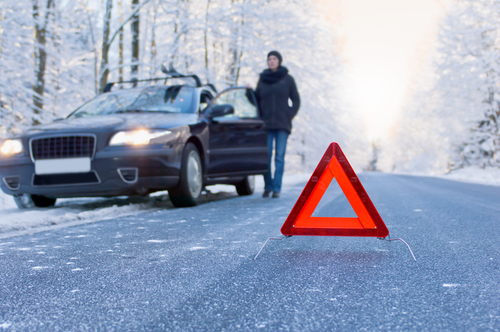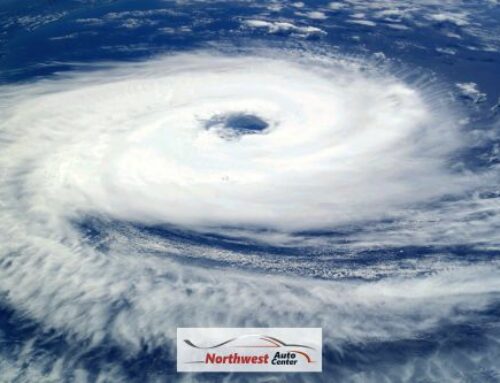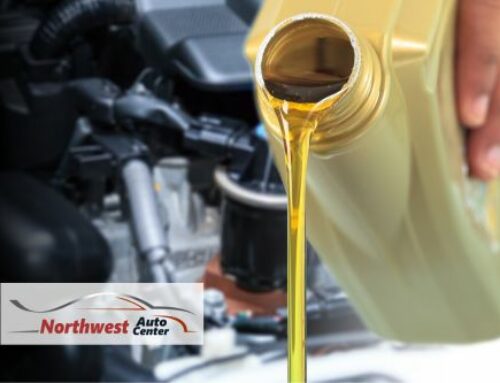Winter is hard—on you and your vehicle. The freezing temperatures. Snow and ice (yep, even here in Houston, TX). The slippery roads. Getting your car winter ready is a must and it starts before the first snowfall.
Getting Your Car Winter Ready
Visibility Check
Seeing clearly is essential during the winter months. Check your wipers, check that your headlights are shining their brightest and check your defroster. Will it keep the ice at bay while driving?
Battery Check
Your battery capacity is reduced by cold weather—depending on the temperature your battery could only be holding half-charge. Also, the low temperatures are making the battery fluid thicker, increasing the strain on your starter.
Have your battery tested, whether at home, at an auto parts store or at your local auto shop to make sure it is fully charged. In addition, check all the cables and terminals for any signs of corrosion or loose connections.
Fluids & Coolant Check
- Coolant. It is absolutely vital for your engine to have the correct antifreeze/water mixture to keep your engine from freezing. Typically, it is a 50/50 mixture. But, in colder areas, some manufacturers and mechanics call for 60/40 or 70/30 mixtures. It is important to never exceed the manufacturer suggestion for your vehicle. Additionally, make sure your coolant level is completely full. A quick service will tell you whether you need to be topped off or a complete flush to restore the correct balance of antifreeze and water.
- Engine Oil. Like other fluids, oil thickens as it gets colder. Modern cars use engine oil adaptable to a wide range of temperatures. However, in places of extreme cold or sustained freezing temperatures, a thinner engine oil is suggested. As always, check your manufacturer suggestion for your car before taking the leap to thinner engine oil.
- Other Fluids. With the extra strain on your engine during winter months, it is important to check all fluid levels and have them topped off. If they need an antifreeze agent (like wiper fluid) make sure that is present in the fluid.
Tire Check
- Type. Not all tires are created equal. For heavy winter weather, some people invest in snow tires for all four wheels. That might be a bit overkill for our neck of the woods but all-season tires are adequate for light to moderate winter weather. If you have to commute, even during that one-off winter snowstorm, keep a pair of tire chains to help get you through.
- Tread. Are your tires too bare? If they are less than 3/32″, it is time to get them replaced. Pro Tip: Check the depth of your tread using a penny. If you insert the penny Abraham’s head first, you should not have a clear view of his entire face. Also, check your tread for signs of uneven wearing, which can be a sign of an unnoticed problem.
- Pressure. For every ten degrees in temperature dropped, your tire PSI goes down by one. This means as the temperature drops, the amount you check your tires goes up.
Protect the Outside
With the inevitable salt, sleet, sand, and mud buildup about to occur on the outside of your car, it is important to treat the paint to avoid corrosion. Get your vehicle winter ready with a healthy coat of wax to protect the paint. Waxy products are also available for your windshield, windows, and mirrors that will reduce ice accumulation and allow snow to slide off easier.
Keeping You Car Winter Ready
Avoid Using Wipers to Clear Windshield
Instead, use your ice scraper and brush. Using your wipers as ice scrapers can damage and tear the rubber on the wiper blade. Using your wipers to clear heavy snow can damage the motor controlling your wipers. Fully functioning wipers are critical when driving in winter conditions. Stick to the ice scraper.
Pro Tip: When using the defroster, utilize your A/C setting. Even with the heat blasting, the A/C mode dehumidifies the air.
Check Your Tire Pressure
Continue to check your tire pressure through the winter months, as they can lose air quickly. If you find yourself in terrible winter driving conditions, try deflating your tires slightly to give you extra grip. However, once back in better conditions, reinflate your tires as underinflation can cause issues down the road.
Dig Out Your Car After a Storm
All the extra weight of the snow can add up—in a bad way. Dig out your car immediately following snow storms. The extra weight on your car does some damage from cracked windshields to cracked wheel bearings.
Clean Your Car Regularly
While that coat of wax helped, you still need to regularly wash away the road grime from your vehicle and undercarriage to prevent corroding. Pro Tip: After running through the car wash, drive around for a bit if its cold out to avoid engine parts freezing (like your brakes).
Keep an Emergency Kit
In Winter, it is good to plan for the worst-case scenario. Keep a winter emergency kit stocked in your car for those worst-case situations. Some suggestions for the kit include:
- Water
- Non-Perishable Snacks
- First Aid Kit
- Blankets
- Warm Layers (gloves, hats, scarves, fleeces)
- Flashlight with Extra Batteries
- Traction Materials (sand, salt, traction mats or cat litter)
- Snow Shovel
- Ice Scraper & Brush
- Warning Devices (flares or triangles)
- Jumper Cables
- Basic Tool Kit
With the temperatures cooling down, Winter will be upon us shortly. Make sure your car is winter ready with this tips. Looking to take your car in for a once over? Call Northwest Auto Center today at 281.894.8880 to schedule a service.







[…] spray, your frozen door and winter season friend. Just spray the rubber gaskets on the inside of the door, removing the excess with a paper […]
[…] that are underinflated mean more friction, traction and resistance. The more resistance, the more gas it takes to keep your tires […]
[…] AWD and 4WD may not be the answer to driving in snow or sand — good, rated tires are. Too often drivers become overconfident in their four-wheel drive […]